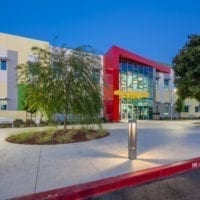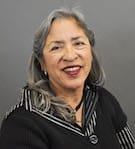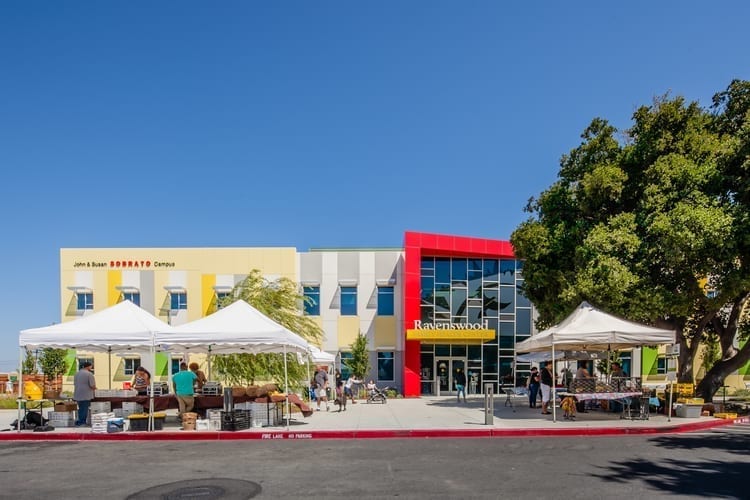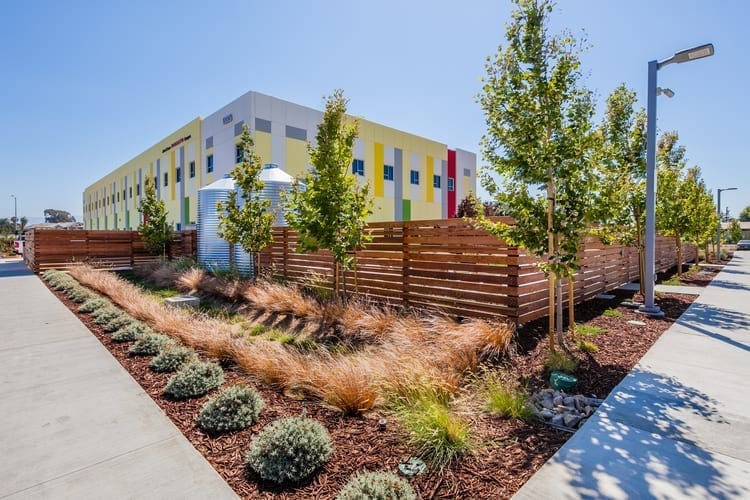‘People Want to Come Here’: Tips from a Health Center CEO



Of the four community health centers founded or developed by Luisa Buada, perhaps one is most prominent: Ravenswood Family Health Center in East Palo Alto, CA.
As Chief Executive Officer for the last 15 years, Buada has energized every facet of Ravenswood — including its transformation from a collection of modular buildings to a gleaming, 38,300-square-foot, custom-built facility in 2015.
Buada worked with PCDC to help finance the project, which included $7.5 million in New Markets Tax Credits (NMTC) and $850,000 in bridge loan financing.
The daughter of a Filipino farm worker and a registered nurse, Buada is a celebrated advocate of health care for all. In a recent conversation with PCDC, she described Ravenswood’s evolution, offering practical advice for health centers that seek to grow.

Buada: The building is so noticeable that people want to come work here, whereas before they might have gone to work at Stanford, for example. It’s a sense of, “I’m in a job that my family can feel proud of.”
We moved from a 7,800-square-foot modular into 38,300 square feet, yet we’re paying the exact same amount of money per year for the financing as we were paying before.
We had 67 people in those little [modular] places and now we have 120 people working out of the main clinic building.
And we went from 152 to 198 full-time employees in the last two years overall, many of them from the local community — we’d hired about 22 percent of people from East Palo Alto [before the new facility] and now we’re at 30 percent.
It’s about knowing what things are absolutely essential, versus what would be great to have if you had enough money or square footage to do it. You have to weigh it all, because you have maybe one chance in a lifetime to do it right. This notion that you can just renovate later down the road — that’s not a good approach.
The well-being of your patients and staff is also at stake. You want lots of natural light, you have to consider things like sound masking, which can help create privacy without creating separation or barriers.
People asked us, “When did you decide to buy the optometry equipment?” I said, “That was part of our capital campaign, because it was our one chance to get these machines.” One of them alone costs $80,000, for example.
So, you can bring a whole lot of people together to raise money in a very exciting fashion. To do it otherwise — a little bit here, a little bit there — is much harder.
To summarize, know what you’re doing, and if not, get people who do. And raise more money than you think you need, because you’ll always need more.

However people might have started or arrived at being poor in this country, they feel a lot of shame and embarrassment about it. Or they’ve only had the ER as the only option all their lives. They’re embarrassed they don’t have a way to pay, and they wait until they’re really sick before they come in.
To come into a place that’s not only beautiful, but where people are friendly — people who greet them, and welcome them, look like them, speak their language — it changes everything. My staff are very diverse — we’re among just a few health centers in the mainland United States to offer Tongan, the native language of more than 5 percent of our patients.

Even the art in our clinic is representative of these diverse cultures. People come in and think, These people are like me, and they’re nice to me, and they find out things that are going on not only with my health, but with the rest of my life — they’re interested in helping me solve these issues. And so patients are extraordinarily grateful.
We have so many services now, it’s like a one-stop shop: integrated behavioral health, a pharmacy, optometry, imaging. People don’t have to give up days of work to go to different places for these services.
Just the fact that people feel cared for can change how they see themselves — their sense of self-worth.
For years, health care was about telling people what to do. The truth is, patients sometimes spend less than one hour with us in a whole year; the rest of their lives they are living however they live.

We are being more inclusive of the patient being a member of the team — the most important person on that team in terms of impacting their own health through their habits, diet, etc. Our job is to support them and create the conditions by which they empower themselves to make a change in their life.
That’s what public health is — helping people be able to live to their fullest potential. So how do we do that and get them active in their own health? It’s not about telling people what to do. It’s about inspiring them. That’s a new way of working in health care.
We start dental care for children at six months of age. We’ve had special-needs kids come in with fevers of unknown etiology, and no one could figure out why. It turned out to be abscessed teeth and other health problems. So, we’ve been able to solve some really difficult problems in people lives, and take away some of the burden and stress of their socioeconomic position.
Now we’re working on programs like how to help parents talk, sing, and read to their children, starting from pregnancy to age three. There’s a lot of people who just don’t know about a child’s development. We help them so that their kids can start school in a better place, developmentally.
It’s all about adjusting poverty through education, starting in pregnancy. We’re doing everything we can to address social determinants of health. We do change the trajectory of people’s lives.